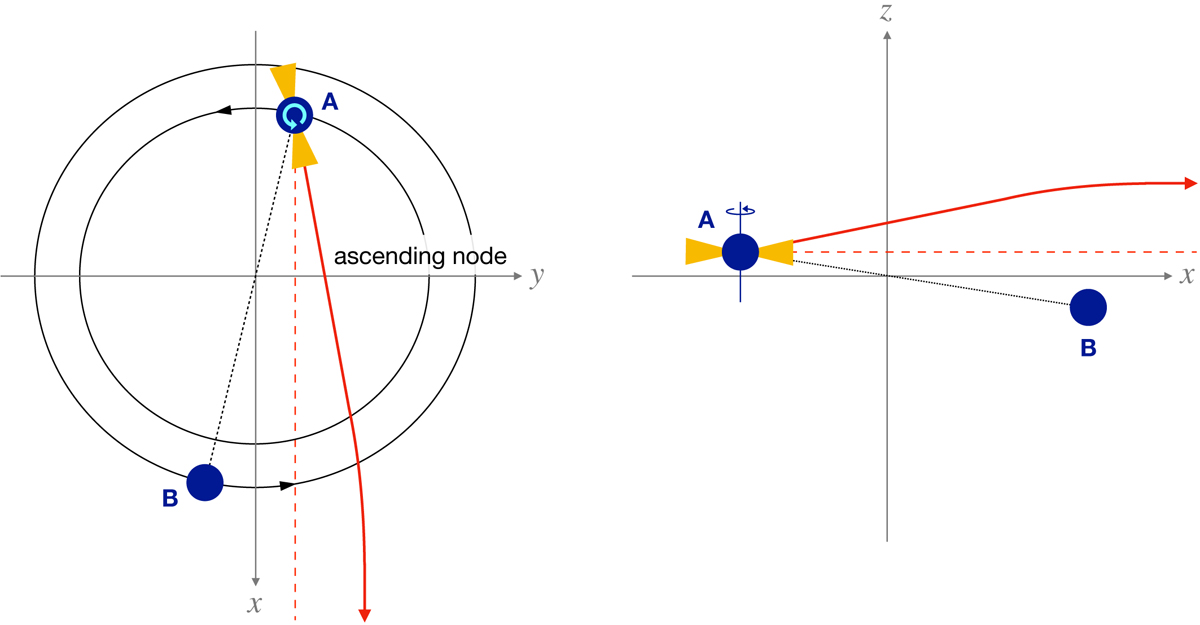Fig. 3.

Download original image
Simplified illustration of effects related to the deflection of A’s radio signals (solid red) in the gravitational field of B (top down and side perspective). The observer is located at a large distance along the x-axis. Apart from modifications in the propagation time due to a curved path in the gravitational field of B (lensing), one has a longitudinal deflection delay (![]() ) due to the fact that the pulsar has to rotate by more than 360° between two pulses while approaching the conjunction. After conjunction, it is less than 360°, which makes pulsar signals arrive earlier at the observer. In addition, there is a latitudinal effect, due to a latitudinal shift in the emission direction towards the observer. This can lead to changes in the pulse profile since the line of sight cuts a different part of the emission region, which can also be accompanied by changes in the pulse arrival times (more details in Sects. 5.1 and 5.2).
) due to the fact that the pulsar has to rotate by more than 360° between two pulses while approaching the conjunction. After conjunction, it is less than 360°, which makes pulsar signals arrive earlier at the observer. In addition, there is a latitudinal effect, due to a latitudinal shift in the emission direction towards the observer. This can lead to changes in the pulse profile since the line of sight cuts a different part of the emission region, which can also be accompanied by changes in the pulse arrival times (more details in Sects. 5.1 and 5.2).
Current usage metrics show cumulative count of Article Views (full-text article views including HTML views, PDF and ePub downloads, according to the available data) and Abstracts Views on Vision4Press platform.
Data correspond to usage on the plateform after 2015. The current usage metrics is available 48-96 hours after online publication and is updated daily on week days.
Initial download of the metrics may take a while.


